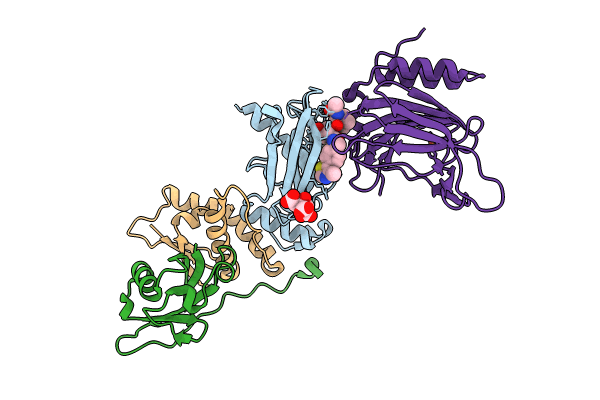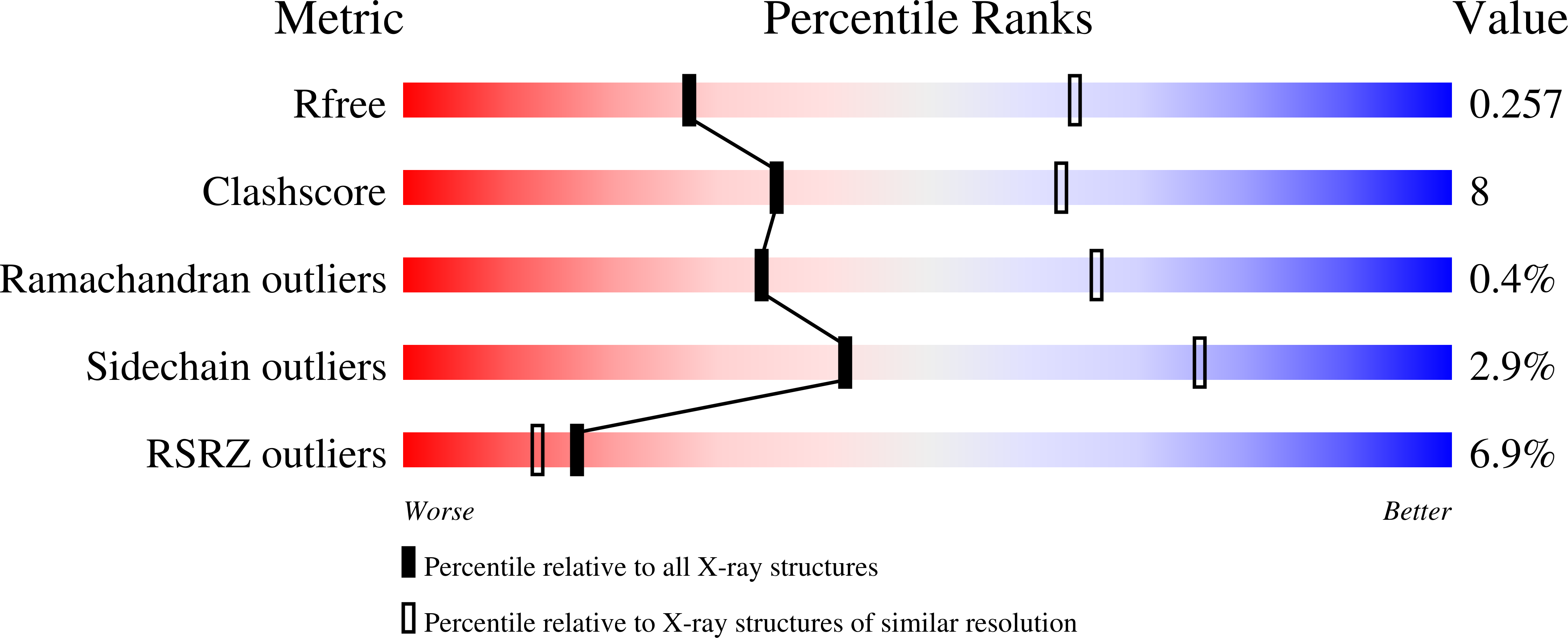
Deposition Date
2024-01-11
Release Date
2024-03-13
Last Version Date
2025-11-05
Entry Detail
PDB ID:
8VLB
Keywords:
Title:
Crystal structure of EloBC-VHL-CDO1 complex bound to compound 4 molecular glue
Biological Source:
Source Organism:
Homo sapiens (Taxon ID: 9606)
Host Organism:
Method Details:
Experimental Method:
Resolution:
2.90 Å
R-Value Free:
0.25
R-Value Work:
0.20
R-Value Observed:
0.21
Space Group:
C 2 2 21


